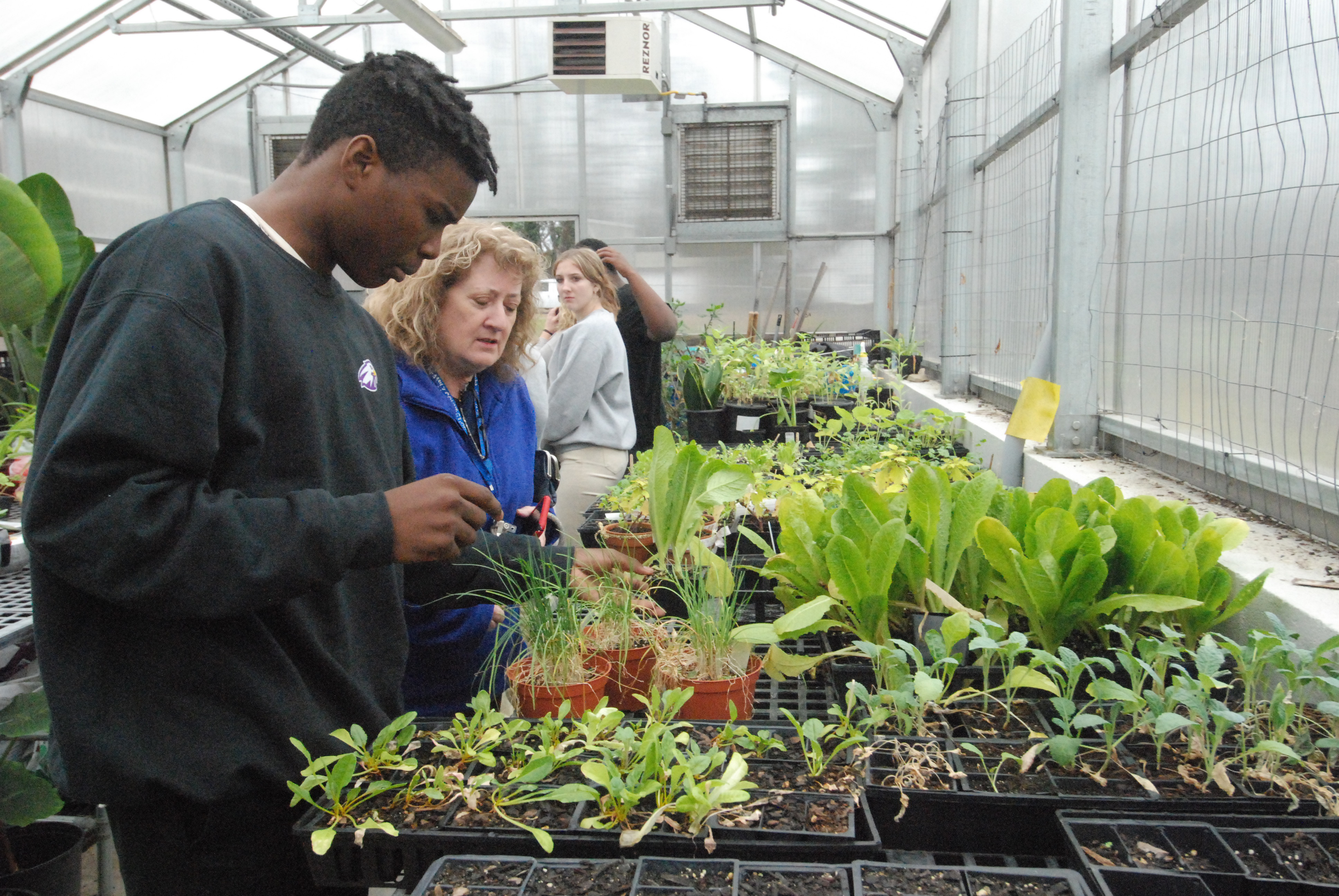Published 12:00 am Tuesday, April 9, 2013
GRANITE QUARRY — Cooking wasn’t easy during colonial times.
I learned that Saturday when I ventured out to the Old Stone House to learn how to make scrag end soup.
The soup itself wasn’t a difficult concoction, but preparing the fire proved to be quite a challenge.
Luckily, Kaye Brown Hirst and Tricia Creel had already started a fire for their soup.
Hirst is the executive director of the Rowan Museum and Creel serves as education coordinator.
First, Hirst instructed me to gather small pieces of wood. After I arranged them under my cooking rack, I used ashes from the existing fire to get my blaze going.
It took a while to turn the smoldering ashes into flames. I had to blow into a long wrought-iron pole to inject more oxygen to ignite the embers.
The chore was made more difficult by the fact that I was wearing period clothing, including a dress, apron, vest and bonnet, which protected my hair from the wrath of the fire. I’m so used to wearing jeans and a T-shirt to do any type of manual labor that it felt weird and a bit uncomfortable to be so decked out.
When the flames finally appeared, I felt like cheering. It was a small victory that seemed monumental after the work that went into it.
Next, we sat a pot of water on top of the rack and waited for it to boil.
In the meantime, I chopped up carrots, green onions and dandelion greens for the soup. I managed to slice off a few chunks of meat from a ham bone before throwing it into the water for flavoring.
After adding everything to the pot, we simply let it cook.
The outcome was a pretty flavorful soup. I liked that it was light, but filling.
The great thing about it is that you can really add anything to the soup that you might have on hand.
“It’s sort of like what you do if you looked in your crisper drawer and you had rubbery vegetables,” Hirst said. “They are still good, and you don’t want to throw them away, so what are you going to do? You’re going to make soup.”
Hirst said colonial people gathered root crops like potatoes, carrots and rutabaga from their gardens all summer and fall long and stored them in the root cellar during the winter.
But as winter drew to a close, many of the vegetables were too old to eat as is.
“They were good for soup,” she said. “And they’ve gone without fresh greens all winter for the most part, except cabbages they had wintered over. So they would go out here, and everywhere you see the little yellow dandelions popping up, there’s dandelion greens. They would pick them and put them in the soup.”
Although Hirst acknowledges she didn’t invent the soup, she’s confident anyone can mix up something like it.
“It’s really whatever you have,” she said. “You put it together, and it tastes pretty good.”
There wasn’t time to bake Saturday, but Hirst shared a recipe for rosemary and black walnut cookies.
“They loved to make a cookie out of just flour, butter and sugar, which are the key ingredients we use today,” she said. “Today we put in chocolate chips, lemon or almond flavoring, but they didn’t have the advantage of just going to their kitchen and pulling out bottles of different flavorings, so they flavored with a lot of herbs.”
Cooking at the Old Stone House was definitely an adventure, but I think I’ll stick to an oven rather than an open fire in the future. That way I won’t have to wipe tears from my smoke-filled eyes or worry about my red hair being singed off.
Contact Sarah Campbell at 704-797-7683.
Twitter: twitter.com/postlifestyes
Facebook: facebook.com/Sarah.SalisburyPost





